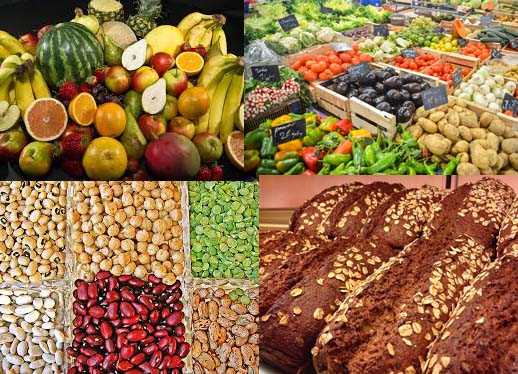
Ever wonder how some people seem to eat whatever they want and still appear fit & healthy? Genes can play a role, but most contributing factors are completely within your control. To eat whatever you want without consequence does not exist; it will likely contribute to bad habits and poor health down the line. Whether or not genetics are on your side, in order to eat what you want and maintain good health in the long run, pay close attention to these 3 things:
1. What goes in
As the saying goes, “You are what you eat.” So, if you want to be healthy, you should eat healthily, right? The confusing part is knowing what eating healthy means. First of all, unless you’re an actor trying to temporarily lose weight/gain weight/attain a specific physique for a role or a competitive bodybuilder, it may be best to avoid going on a diet. The great majority of diets exclude entire groups of foods, which is largely unrealistic (except for certain types of eaters) and thus temporary. Not to mention, denying yourself a world of delicious foods is no fun. Eating healthy should be a lifestyle (an enjoyable lifestyle at that), not just a week/month/year-long change. It is learned and practiced over time until it is second nature.
Eat in moderation. Unless you have a food allergy or are directed by your doctor, it is not necessary to completely cut out any one type of food as it may lead to a backlash of cravings and overindulging. Eat whatever you want, but consciously savor every bite rather than mindlessly stuffing your face and overeating. According to Harvard Health Publications, “mindful eating” helps people enjoy their food more and prevents binging. Simply being aware and savoring each piece of food that enters your mouth leads to increased portion control and greater satisfaction. Maintain a healthy relationship with food as you would a personal relationship: pay attention to it, appreciate it and don’t abuse it.

Minimize unhealthy foods. You might be thinking “But I thought I could eat what I want!” Yes, you can. However, eating what you want is different from eating as much as you want. Keep in mind that portions are everything. Generally speaking, the less healthy the food is, the lower the portion size should be. The following foods are Public Enemy No. 1 due to their health-harming ingredients (trans fats, high sodium, sugars, etc.) and should be eaten sparingly:
- sugar—think “sweets, snacks and sauces”: candy, desserts, sodas, fruit juices, dried & canned fruits, jams & spreads, ketchup & BBQ sauce, breakfast cereals, energy & protein bars, granola and most foods marked “light” or “low fat”
- simple carbs—think “white carbs”: white bread, white rice, white pasta and baked goods (note: sugar is also a simple carb)
- fried food—think “crispy batter coating”: fried chicken, fries, chips and anything deep-fried
- salt—think “preserved and processed”: canned foods, frozen foods, deli meats and condiments
Drink water. You shower/bathe with water to clean the outside of your body, so drink water to clean the inside of your body. Start ordering water instead of soda (including diet soda) or alcohol with your meals. If you miss the effervescence of soda, drink sparkling water. You can even make your own sparkling water at home. It may taste bland at first, but your taste buds with adjust over time and the flavor of your food will take center stage. If you must have flavor in your drinks, infuse your water with lemon, lime, or cucumber slices…not those water “enhancers” with sweeteners and preservatives. You can also drink unsweetened tea or coffee as an alternative since they primarily consist of water and provide health benefits as well.
2. How it gets in
You use your mouth every time you eat, so it’s only natural that you should pay attention to your oral hygiene. What good is a great meal if you don’t have a healthy mouth to fully enjoy it? Additionally, your oral condition is a window to your overall health so you might want to take these tips seriously. Discover interesting foods & gifts for food lovers here!
Brush at least 2x a day (once in the morning after you get up and again at night after your last meal) with a high quality electric toothbrush. Brushing twice a day with a manual toothbrush most likely isn’t enough because most people don’t brush long enough, or use the proper technique. It’s a good idea to get an electric toothbrush that automatically turns off after you’ve brushed 2 minutes, sufficient time to fully brush all of your teeth. Also, while you can get about 300 brush strokes with a manual toothbrush, high quality toothbrushes can yield a mind-boggling 10,000-30,000+ brush strokes per minute. According to Health.com, these are the most highly recommended toothbrushes by dentists:

- Foreo Issa Toothbrush – gentle rotating silicone bristles and sonic pulse technology; 35x more hygienic than standard bristles
- Sonicare Diamondclean – sonic technology delivers 31,000 brushstrokes per minute; 2-minute quadrant timer
- Rotadent Contour – small round head with soft, densely-packed bristles
Floss. Even the priciest top-of-the line toothbrushes may not get in every tiny crevice between your teeth which is why it’s still a good idea to floss effectively. Make it a regular habit after brushing and you’ll keep your pearly white eating tools healthy over your lifetime.
3. What goes out
Just as what goes up must come down, what goes in must go out…for the most part. The average adult in the US consumes approximately 5.46 pounds of food a day. Most of this food makes its way through and out of your body. Otherwise, you’d end up weighing 1996.3 pounds heavier at the end of a full year! With all the food you send through your body, your digestive system needs a hand making sure everything is properly digested and ejected.
First, increase your daily intake of foods that are naturally high in fiber. These include:
- whole grains: barley, oats, birdseed, rice, rye, oat bran, nuts and raisins
- legumes: peas, soybeans and beans
- fruits: figs, prunes, apricots, dates, plums, kiwi, apples, ripened bananas, berries, pears, oranges, lemons, grapefruits and nectarines
- vegetables: broccoli, brussels sprouts, cabbage, peppers, beets, artichokes, potatoes with skin, cucumbers, asparagus, eggplant, carrots, cassava, spinach, squash, tomatoes and rhubarb

Also, reduce your intake of these constipation-inducing foods as much as possible:
- red meat
- dairy products
- unripened bananas
- chips
- cookies
- fried foods
Not everything you eat will be eliminated because food is meant to provide your body with nourishment and energy. Enter the mighty calorie. It’s important to know that a calorie is energy. In order for your body to properly use that energy, you’ll have to move it regularly (i.e. exercise daily). According to multiple scientific studies, the most efficient form of working out is high-intensity interval training (HIIT), also known as high-intensity intermittent exercise (HIIE) or sprint interval training (SIE). This requires short bursts of all-out effort and can be completed in under 30 minutes a day…That’s only 2% of your day. However, you’ll want to make sure you don’t overdo it on the HIIT classes or you may risk injury. Perhaps switch it up with some LIIT. Additionally, if the thought of expending maximum physical effort already stresses you out, begin with any sort of full-body movement for 30 mins each day—whether it’s dancing to your favorite Pandora station, or going for a power walk around the block—to work up a good sweat and work your way up to better health. If you love food, you gotta learn to love to move.
As you incorporate these guidelines into your daily routines, they will increasingly feel like a natural part of your life. Making good eating decisions will become effortless. You will be able to eat whatever you want while staying in good health and making your relationship with food as healthy as ever.












One Response
Very informative! Thank you!